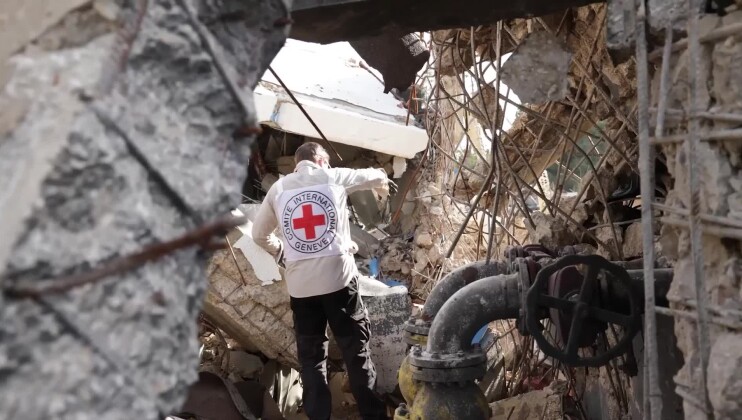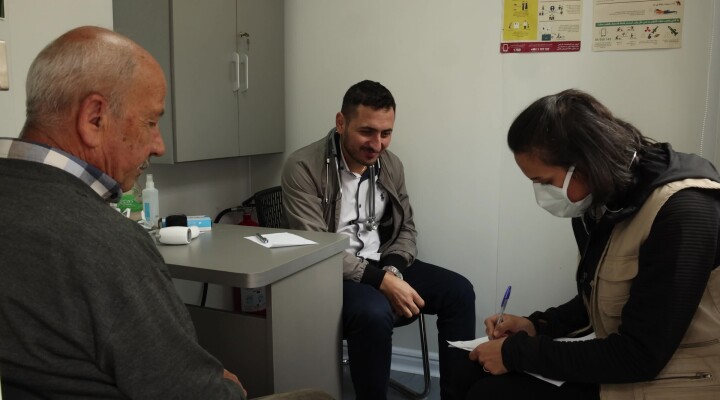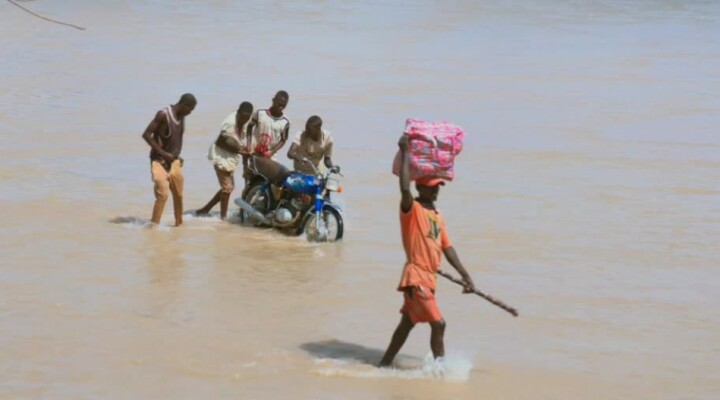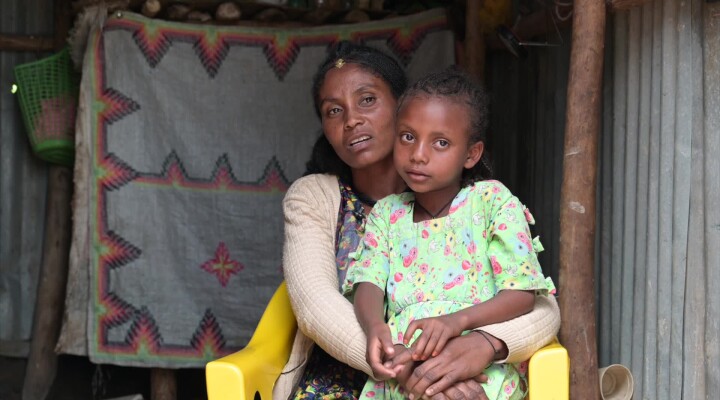South Sudan: Ten years after independence, hundreds are treated for gunshot wounds each year
9 July marks a decade of existence for South Sudan, the world’s youngest country – and it is a decade that has battered communities and families across the country with conflict and armed violence.
The already fragile health-care system has been further weakened or destroyed, by the violence and this is only one of the tragic consequences of the protracted crisis in South Sudan.
In remote areas of South Sudan, people die of preventable and treatable diseases. “I have to walk for four hours from my village, crossing two rivers, to get treatment here in this health facility”, said Nyamuch Koang, a resident of Roam Village, Unity State. “Just last year, someone from our village, suffering from diarrhea, died on the way while they were trying to rush him to this health facility because of the distance to this place, he could not make it.”
Only an estimated 40% health-care centers in South Sudan remain functional. Wounds that can be easily treated if a patient has access to quick treatment can become much more serious.
“A patient came after a few days and he had a lot of soft tissue injury, a lot of bone injury. We had no option but to offer him the best treatment, which was amputation. But we are not here to amputate, we are here to save lives and save limbs. If they had services at their locality, then we could prevent some of the complications”, explains Dr. Belayneh Assefa, a surgeon working at Juba Military Hospital surgical unit, supported by the International Committee of the Red Cross (ICRC).
Underscoring the scale of the violence is the fact that the ICRC has provided surgical care to more than 9,000 weapon-wounded patients since the birth of the world’s newest country in July 2011. In 2020, women and children comprised nearly a quarter of these patients treated by the ICRC.
Attacks against medical personnel and facilities, as well as limited number of health workers are some of the factors that contributed to this dramatic situation. In the past ten years, the ICRC has provided almost 1.5 million consultations in the primary healthcare centers it supported.
For further information, please contact:
Lucien Christen, Juba, +211 912 360 038, lchristen@icrc.org
Aidah Khamis Woja, Juba, +211 925 230 500, wajioaidahkhamis@icrc.org
Alyona Synenko, Nairobi, +254 716 987 265, asynenko@icrc.org
SHOTLIST
Location: South Sudan
Length: 8.51
Camera: Junior Ali, Aidah Khamis and Eric Chege
Editor: Eric Chege
Filming Date: 24th June to 1st July 2021
Copyright: ICRC access all
On Screen Credit: ICRC or logo
00.00-00.13
Aerial shots of Leer county, Unity State
00.14-00:22
Wide shot of ICRC car passing through a bad road in Padeah, Unity State
00.23-00.29
Wide shot of people walking close to Adok, Leer county, Unity State
00.30-00.51
Shot of a woman walking through swamp to board a boat close to Adok, Leer county Unity State
00.52-00.59
Shots of a young man with his boat close to Adok, Leer county, Unity State
01.00-01.07
Shot of a woman being carried on a boat, close to Adok, Leer county, Unity State
01.08-01.20
Shots of Adok Primary Health Care Center in Leer County, Unity State
01.21-01.53
Interview: Nyamuch Koang, Resident - Roam Village
“ I come from a village called Roam. My body has been aching all over, so much, for some time now. I have been coming to this clinic to get treated. We do not have public transport in this area. I have to walk for four hours from my village, crossing two rivers, to come and get treatment here in this health facility. Just last year, someone from our village suffering from diarrhea died on the way while they were trying to rush him to this health facility, because of the distance to this place, he could not make it.”
01.54-02.04
Exterior shots of Adok Primary Health Care Center.
02.05-02.19
Shots of the facilities in Adok Primary Health Care Center.
02.20-02.40
Various shots of women seated at Adok health care facility.
02.41-03.11
Interview: Nyalel Lual Chuol, Resident - Adok Village
“When I was pregnant with my son, I fell so sick that I had to go to Leer, a neighboring village about 40 kilometers away, to get treatment. There was no means of transport, so I walked all the way, and spent the night on the journey. I went to Leer because I had a lot of pain and movements in my stomach, so I feared that I might lose my baby.”
03.12-03.27
Shots of a woman being attended to at Padeah Primary Health Care Center
03.28-03.44
Shots of a sick woman at Padeah Primary Health Care Center
03.45-04.01
Interview: Nyachang Wejang Kiir, Resident - Leeh Village
“I came to the hospital because I am feeling very weak, my legs are also weak and I have pain in my back. Now, from Leeh to this health facility in Pader, I walked for six hours, because I am sick. When I am not sick, it takes me one and a half hours to get here.”
04.02-04.18
Various exterior shots of Padeah Primary Health Care Center.
04.19-04.36
Various exterior shots of people at Padeah Primary Health Care Center.
04.37-04.53
Various shots of people being attended to at Padeah Primary Health Care Center.
04.54-05.23
Interview: Batholomeo Yak, Clinical Officer - Padeah Primary Health Care Center
“It is now the rainy season, a patient who is suffering and is far away may not reach here because of lack of roads, there is no way to bring the patient from the village to the facility. Also people are afraid of traveling at night because of thieves and cattle rustlers.”
05.24-05.29
Shot of the ICRC ward at Juba Military Hospital
05.30-06.06
Various shots of a patient undergoing surgery in the ICRC ward at Juba Military Hospital
06.07-06.50
Interview: Dr. Belayneh Assefa, ICRC Surgeon
“There are a lot of problems especially in infrastructure, most of the patients are evacuated by our teams from the field be it by fixed wing planes or by helicopter. Because of logistics, you cannot just bring a patient who has been requested to be flown today, you cannot bring him today. They come in 48 hours if it’s urgent and most of them come after one week. If you get injuries that are fresh as six to eight hours, the outcome will be better. If they arrive after seven days, they will be infections and some other problem.”
06.51-07.18
Various shots of ICRC surgeon and nurses examining patients in the ward.
07.19-07.51
Interview: Treza Sima, Resident - Lainya County
“I was admitted at the hospital in Wonduruba for seven days. My father used to buy the medicines for my treatment from a pharmacy. On the eighth day, the army around realized that I was badly off, they took a tanker and a pickup truck and rushed me to a health facility in Lainya. I spent seven days in Lainya, then the County Commissioner there handed me to the Red Cross, and that is how they brought me here.”
07.52-08.18
Various shots of ICRC surgeon and nurses examining a patient whose leg was amputated as a result of a gun shot wound.
08.19-08.51
Interview: Dr. Belayneh Assefa, ICRC Surgeon
“Sometimes it becomes complicated. For example, a patient came after a few days and he had a lot of soft tissue injury, a lot of bone injury. We had no option but to offer him the best treatment which was amputation, but we are not here to amputate, we are here to save lives and save limbs. If they had services at their locality then we could prevent some of the complications.



